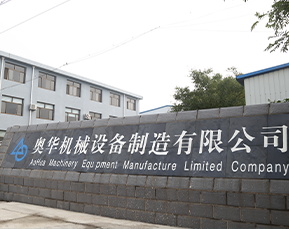 Afrikaans
Afrikaans  Albanian
Albanian  Amharic
Amharic  Arabic
Arabic  Armenian
Armenian  Azerbaijani
Azerbaijani  Basque
Basque  Belarusian
Belarusian  Bengali
Bengali  Bosnian
Bosnian  Bulgarian
Bulgarian  Catalan
Catalan  Cebuano
Cebuano  Corsican
Corsican  Croatian
Croatian  Czech
Czech  Danish
Danish  Dutch
Dutch  English
English  Esperanto
Esperanto  Estonian
Estonian  Finnish
Finnish  French
French  Frisian
Frisian  Galician
Galician  Georgian
Georgian  German
German  Greek
Greek  Gujarati
Gujarati  Haitian Creole
Haitian Creole  hausa
hausa  hawaiian
hawaiian  Hebrew
Hebrew  Hindi
Hindi  Miao
Miao  Hungarian
Hungarian  Icelandic
Icelandic  igbo
igbo  Indonesian
Indonesian  irish
irish  Italian
Italian  Japanese
Japanese  Javanese
Javanese  Kannada
Kannada  kazakh
kazakh  Khmer
Khmer  Rwandese
Rwandese  Korean
Korean  Kurdish
Kurdish  Kyrgyz
Kyrgyz  Lao
Lao  Latin
Latin  Latvian
Latvian  Lithuanian
Lithuanian  Luxembourgish
Luxembourgish  Macedonian
Macedonian  Malgashi
Malgashi  Malay
Malay  Malayalam
Malayalam  Maltese
Maltese  Maori
Maori  Marathi
Marathi  Mongolian
Mongolian  Myanmar
Myanmar  Nepali
Nepali  Norwegian
Norwegian  Norwegian
Norwegian  Occitan
Occitan  Pashto
Pashto  Persian
Persian  Polish
Polish  Portuguese
Portuguese  Punjabi
Punjabi  Romanian
Romanian  Russian
Russian  Samoan
Samoan  Scottish Gaelic
Scottish Gaelic  Serbian
Serbian  Sesotho
Sesotho  Shona
Shona  Sindhi
Sindhi  Sinhala
Sinhala  Slovak
Slovak  Slovenian
Slovenian  Somali
Somali  Spanish
Spanish  Sundanese
Sundanese  Swahili
Swahili  Swedish
Swedish  Tagalog
Tagalog  Tajik
Tajik  Tamil
Tamil  Tatar
Tatar  Telugu
Telugu  Thai
Thai  Turkish
Turkish  Turkmen
Turkmen  Ukrainian
Ukrainian  Urdu
Urdu  Uighur
Uighur  Uzbek
Uzbek  Vietnamese
Vietnamese  Welsh
Welsh  Bantu
Bantu  Yiddish
Yiddish  Yoruba
Yoruba  Zulu
Zulu mining conveyor pulleys
Understanding Mining Conveyor Pulleys Key Components in Material Handling
In the world of mining, efficiency and reliability are vital for successful operations. Conveyor systems play an essential role in transporting materials, from raw ore to refined products, across various stages of the mining process. Among the critical components of these conveyor systems are conveyor pulleys, which serve as integral parts in facilitating the movement of materials. This article delves into the significance, types, and maintenance of mining conveyor pulleys.
The Importance of Conveyor Pulleys in Mining
Conveyor pulleys are cylindrical segments attached to conveyor systems that help drive the conveyor belt and support its weight. They are critical for ensuring that the conveyor operates smoothly and efficiently. The primary function of these pulleys includes
1. Driving Force Drive pulleys, or head pulleys, are situated at the end of the conveyor system and provide the necessary force to move the belt. They are powered by electric motors and are crucial for the overall operation.
2. Support and Stability Return pulleys support the conveyor belt when it is not loaded, ensuring that the belt maintains its alignment and stability as it moves across the conveyor system.
3. Weight Distribution Pulleys assist in distributing the weight of the conveyed materials evenly along the conveyor, minimizing wear and tear on the belt and other components.
4. Material Carrying Tail pulleys are located at the opposite end of the conveyor and are pivotal for returning the belt to the starting position after it has completed its cycle.
Types of Conveyor Pulleys
There are various types of conveyor pulleys, each designed for specific functions within the mining industry
. The common types include- Drive Pulleys Used to propel the conveyor belt forward, usually featuring a rubber coating to increase friction and avoid slippage.
mining conveyor pulleys

- Idler Pulleys Positioned along the conveyor path, they support the belt and help maintain its tension. These pulleys are vital in reducing wear on the belt.
- Tail Pulleys Located at the end of the conveyor, they return the belt to its starting position and are instrumental in keeping the system operational.
- Take-Up Pulleys These pulleys are adjustable and help maintain the tension of the conveyor belt, preventing slippage and ensuring efficient operation.
Maintenance and Best Practices
Regular maintenance of conveyor pulleys is essential for optimal performance and longevity. Neglecting this can lead to significant downtime and costly repairs. Here are some best practices for maintaining mining conveyor pulleys
1. Inspection Routine inspections should be conducted to check for wear, misalignment, and signs of damage. Identifying issues early can prevent catastrophic failures.
2. Lubrication Keeping bearings and other moving parts adequately lubricated can significantly extend the lifespan of pulleys. Ensure that the correct type of lubricant is used according to the manufacturer's specifications.
3. Alignment Proper alignment of pulleys is crucial for efficient operation. Misaligned pulleys can cause increased wear on the belt and other components.
4. Replacement Pulleys should be replaced when they show signs of excessive wear or damage. Using original equipment manufacturer (OEM) parts ensures compatibility and reliability.
Conclusion
Mining conveyor pulleys are vital components of material handling systems that play a critical role in enhancing the efficiency of mining operations. Understanding the types and functions of these pulleys, as well as the best practices for their maintenance, can lead to improved operational reliability and productivity. As the mining industry continues to evolve, investing in high-quality conveyor systems and components, including pulleys, remains a key strategy for success in a competitive market.
-
Revolutionizing Conveyor Reliability with Advanced Rubber Lagging PulleysNewsJul.22,2025
-
Powering Precision and Durability with Expert Manufacturers of Conveyor ComponentsNewsJul.22,2025
-
Optimizing Conveyor Systems with Advanced Conveyor AccessoriesNewsJul.22,2025
-
Maximize Conveyor Efficiency with Quality Conveyor Idler PulleysNewsJul.22,2025
-
Future-Proof Your Conveyor System with High-Performance Polyurethane RollerNewsJul.22,2025
-
Driving Efficiency Forward with Quality Idlers and RollersNewsJul.22,2025





























